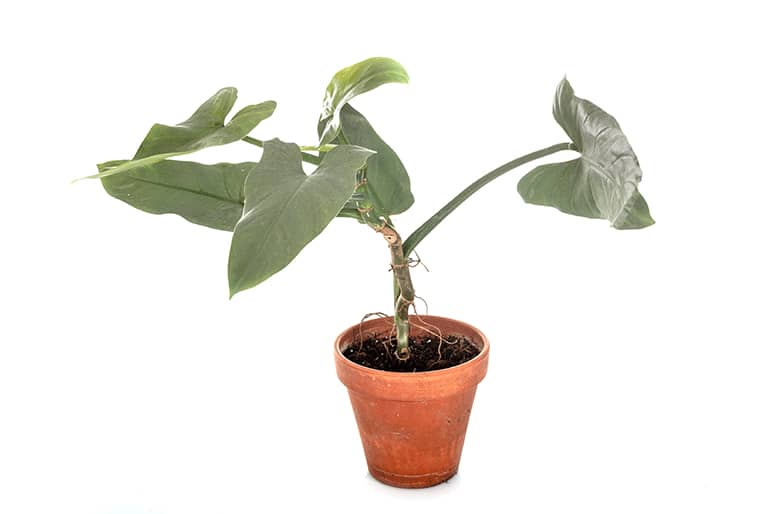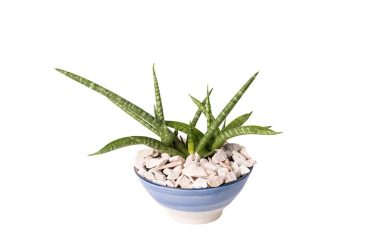The Plant, Philodendron Hastatum Air Purifier Houseplant astonishes everyone by its marvelous silver leaves. Due to its blade-shaped leaves, people also call it the silver sword dendron. Scientists referred to the silver sword as Philodendron Domesticum in former records.
The handy climbing vine shows high adaptiveness to any environment. However, excess cold or frost can obstruct its overall growth. In order to ensure its development and proper maintenance in the conservatory, we have held a detailed discussion on “How to Grow Philodendron Hastatum Air Purifier Houseplant With Care And Maintenance”.
As a gardener, the whole journey of growing and maintaining a Philodendron hastatum will be quite exciting. Go through our exclusive tips right now and let the climbing vine grow gracefully in the conservatory.
What Is Philodendron Hastatum?
Philodendron Hastatum or silversword refers to an aroid majorly available in Brazil’s Rio de Janeiro and Minas Gerais. Due to massive deforestation in Brazil, this plant has gone extinct. Thankfully, this climber is still available in collections, Conservatories, and domestic plantations. Its previous name, Philodendron Domesticum, seems to confuse gardeners due to the vast variation in the Philodendron genus. The clumber, Philodendron, generally reaches 6 feet to 10 feet in height if it comes in contact with a pole. In Colombia, this species seems to grow around 20 feet.
Characteristics Philodendron Hastatum Air Purifier Houseplant
Philodendron is the second largest genus in Araceae, which has approximately 489 species under it. Other popular names of this aroid are Philodendron Hastifolium and Philodendron Elongatum. Due to its bluish or silvery foliage, people also call it Philodendron Hastatum silvery-blue & Philodendron Hastatum silver.
- Hastatum has relatively short nodes and can grow around 3-inches in a pot. This more comprehensive plant ( more than twice compared to height) has a thicker stem.
- Like other philodendrons, it also has a high growth and development rate. Support can influence its climbing habit and healthy foliage.
- At their early age, the heart-shaped leaves appear to be dark green or pale grey. A leafy structure called cataphyll protects the baby leaves of Philodendron Hastatum. However, during its juvenile period, it gains arrow-like leaves in metallic grey or silvery blue.
- After being mature, this climber blooms numerous white flowers arranged in the spathe. It generally takes a decade to gain such maturity.
Advantages:
The decorative plant, Philodendron Hastatum Air Purifier Houseplant, is majorly found in warm indoor conservatories.
- You can use them to decorate plant baskets or pots. Many gardeners prefer to grow them in terrestrial pots along with artificial support.
- It performs significantly as an air purifier.
Disadvantages:
Just like other philodendrons, silver sword philodendrons are highly toxic. Ingestion of its leaves may cause throat ulcer or irritation in the oesophagus. Thus, it would be best to keep pets and babies far from this plant.
A Detailed Guideline On How to grow Philodendron Hastatum Air Purifier Houseplant With Proper Maintenance & Care
As you have read our content this far, I bet you are wondering about “How to grow Philodendron hastatum air purifier House plant?” In order to grow this climbing vine, you need to ensure optimum light, temperature, humidity, and well-drained soil. Check our article below for more detailed guidance.
Light:
Medium and bright, but indirect light is best for the proper growth of Philodendron hastatum. It has an intolerance for direct sunlight. Direct sun can even lead to leaf burn. It can even survive in low light conditions but may become leggy while trying to reach the light. Optimum lighting will enhance the growth rate, and the plant appears to be denser and bushier.
North-facing windows or Eastern exposure can be ideal for indoor conservatories. Placing the plant in the west or south will be a great idea, just keep it some feet away from the window. Using 20% to 40% sheer curtains can assist it a bit by filtering lights.
Proper Temperature
Being a tropical climber, it loves warm weather and high humidity. It shows a high growth rate around 65°F to 78°F. During freezing temperatures, it might be hard for this plant to survive. So, a gardener has to keep it away from locations where the temperature is less than 55°F. So, place your seedling in a warm conservatory before the first frost begins.
Necessary Humidity
Philodendron hastatum can grow in-home humidity rapidly but has a high intolerance for dry air. Low humidity may result in dropping, and the leaves will become yellow. Just follow several steps to increase the humidity of the conservatory.
- Keep the climber with other plants.
- Place the seedling on a pebble tray.
- Keep it in an area with high humidity, such as – washroom.
- Purchase a humidifier for the home.
You can measure the humidity of your house with a digital hygrometer.
Pot Requirements
Go for a 10-12 inches pot to plant and grow Philodendron hastatum in the garden.
- The pot must contain a hole at the base for proper drainage.
- A moss pole or totem can enhance climbing.
This climber seems to perform well in hanging baskets.
Soil Preparation
Philodendron hastatum air purifier Houseplant loves moist soil, which is mildly acidic to neutral (6.1 – 7.5). As it has a high intolerance for wet conditions, excess water may cause root Rot. So, maintain proper drainage and don’t water the soil until it seems less moist and dried. Loose soil with high organic content is incredible for enhancing its overall growth.
- A gardener can try using sphagnum moss as they are an incredible growth enhancer. However, this moss doesn’t contain macro or micronutrients. So, apply some organic fertilizers along with sphagnum moss.
- If homemade potting soil is your thing, utilizing peat, vermiculite or perlite would be a great idea. Many gardeners prefer succulent, cacti, or African potting mix.
| Soil Mix For Philodendron | |
| Soil | 55% |
| Sand | 20% |
| Compost | 15% |
| Coco coir | 10% |
Fertilizers Requirement For Philodendron Hastatum
Fertilize during spring and summer as the warmth of these seasons tends to enhance the growth of Philodendron hastatum. However, avoid fertilizing during winter or low growth period.
Fertilizers with High macronutrients (N, P, K) perform as an amplifier to promote the overall growth of Philodendron hastatum. Calcium and magnesium are essential to ensure their proper growth. Malnutrition may cause pale discolored leaves.
Using too much fertilizer can also damage or burn the plant’s roots. Generally, I prefer 1 teaspoon of chemical fertilizer in 4 liters of water and use half dose during winter.
The fertilizers I commonly used are –
- Miracle-Gro Liquid plant food (all-purpose fertilizer)
- Superthrive (special supplement for root growth).
- Grotek Vitamix Pro (organic vegan fertilizer)
| Scientific Name | Philodendron hastatum. |
| Common names | Silver Sword Philodendron, Philodendron Domesticum. |
| Plant type | Climbing vine. |
| Leaves Shape | Blade/arrow. |
| Leaves Color | Metallic grey or silvery blue.
|
| Flower Color | White. |
| Height | Three inches in a pot. |
| Optimum Temperature | 65°F to 78°F |
| Soil type | Peat. |
| Soil pH | 6.1 – 6.5 (acidic)
6.6 – 7.5 (neutral) |
| Light | Partial sunlight. |
| Habitat | Tropical rainforest. |
| Hardiness zones | USDA 9b to 11b. |
| Native | Colombia, Brazil. |
Pinching Requirements
Every plant may require pinching near nodes to prevent the death of bare stems and maintain the plant’s best shape. Pinching also helps in maintaining the healthy foliage of Philodendron hastatum. If you already own a lanky silver sword Philodendron, pinching it would be a great idea.
Pruning
The climber, Philodendron hastatum can grow longer depending on a moss pole or supporter. Pruning a climber might seem unnecessary as it won’t spread mainly in any area.
Removing dead and dry leaves improve the overall appearance of the plant. You can also trim the long stems or leggy portions. Moreover, Pruning keeps the plant healthy by utilizing its resources only on the healthy segments.
Water Requirements: How To Water Philodendron hastatum?
Philodendron hastatum can bear dry soil for a while, but moist soil is best for its growth. Too dry environment or drought can damage the seedlings. In warm seasons ( during summer & spring), you can maintain proper moisture by watering the plants from time to time.
- By inserting the finger inside the soil ( 2 inches deep), we can check its moisture. If the soil is well-drained, there shouldn’t be any soggy feeling inside. If the ground feels wet, we would suggest delaying the watering session for a day.
- The top 2 inches of the soil surface should be dry. We suggested this technique so that you don’t overwater your plant.
- Water twice a week is enough during summer.
- During winter, let the soil dry up more by reducing the water supply.
- If you live in a dusty environment, it would be a great idea to shower your plant regularly. Thus, the plant will look healthy and clean. Clean leaves are beneficial for absorbing light effectively.
Yellow or brown leaves mean you are overwatering the seedling. On the contrary, wilting leaves refer to the deficiency of water.
Step By Step Propagation:
Like any other Philodendron, the silver sword will require cutting for appropriate propagation.
- Need to cut a 6 inches stem from a mature and healthy plant.
- You have to cut with a sharp knife or scissors below a leaves set.
- Pinching three sets of leaves will make a minimum of two nodes.
- Finally, plant the leafless stem 3 inches deeper into the moist soil, enriched in organic substances.
Transplanting & Repotting Of Philodendron hastatum:
The low-maintenance Silversword Philodendron needs repotting only when the roots have reached the bottom of the pot. For transplantation or repotting, choose a pot 3 inches (maximum) larger than before. Such space would be enough for the proper growth of roots.
What Are The Common Issues Of Philodendron hastatum ?
Though Philodendron hastatum needs low maintenance, it may show several issues, including –
Pest:
Though the climber has a high resistance, it hasn’t developed proper immunity against pests. Spider mites or mealybugs can destroy the plants by sucking nutrients.
- It would be best to inspect regularly against pests.
- Spray insecticides & Rubbing alcohols to get rid of mealybugs.
Proper inspection and insecticides can eradicate the pest within a few weeks.
Discoloration:
Drooping & Discolored leaves are the sign of under or over watering, respectively. Yellow leaves are a sign of excess sunlight. One or two yellow leaves at once is a regular thing. If most of the leaves begin to turn yellow, it is high time for you to move the plant from excess lighting conditions.
FAQs: Frequently Asked Questions On Philodendron Hastatum Air Purifier Houseplant
Can a Philodendron Hastatum Air Purifier Houseplant grow in water?
After cutting the stem, you can propagate it either in the water or in the moist soil.
Why are the silver philodendron leaves curling?
Curling leaves are a symptom indicating that the roots are not able to lift water to the leaves. It might be due to dehydration or overhydration.
When does Philodendron bloom?
A Philodendron takes around a decade or 15 to 16 years to reach proper maturity. Once the climber is matured, it will bloom from May to July, signaling its reproductive period.
Final Thoughts
The metallic foliage of the Philodendron Hastatum looks so incredible that every gardener would fall in love with its appearance. I believe you have checked our article from that attraction and curiosity. I bet you have gained a clear concept on “How to grow Philodendron hastatum air purifier Houseplant ?” So, are you ready to grow and maintain this masterpiece in your landscape?





